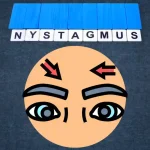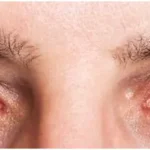What Are Eye Floaters?
Eye floaters are small, shadowy shapes that appear in a person’s field of vision. They may look like black or grey specks, cobwebs, or thread-like strands drifting when the eye moves. While they are often harmless, a sudden increase in floaters in one eye or both may indicate an underlying eye condition requiring medical attention.
What Causes Eye Floaters?
Eye floaters develop when tiny clumps of collagen or other debris form in the vitreous, the gel-like substance inside the eye. These particles cast shadows on the retina, leading to the perception of floating shapes. Some of the primary causes include:
Age-Related Changes
As people age, the vitreous naturally shrinks and becomes more liquefied, forming floaters in the eye. This process, known as posterior vitreous detachment (PVD), is a common cause of floaters in individuals over 50.
Eye Injuries and Inflammation
Eye injuries, infections, or conditions such as uveitis (inflammation of the eye) can develop floaters in the eye. Uveitis can cause inflammation in the vitreous, leading to the presence of debris that appears as floaters.
Retinal Detachment or Tears
A sudden increase in floaters in one eye, especially when accompanied by light flashes, could indicate a retinal tear or detachment. This condition requires urgent medical intervention to prevent vision loss.
Bleeding in the Eye
Conditions such as diabetic retinopathy or hypertension can lead to bleeding inside the eye, resulting in the presence of eye floaters. The blood particles interfere with normal vision, creating dark or shadowy spots.
Post-Surgical or Post-Laser Treatment Effects
Individuals who have undergone cataract surgery, laser procedures, or other ophthalmic surgeries may develop floaters in the eye as a side effect. These floaters may resolve over time but should be monitored by an eye specialist.
Are Eye Floaters Normal?
For many individuals, occasional eye floaters are a normal part of aging. However, certain symptoms may indicate a more serious problem:
- A sudden increase in the number of floaters
- Flashes of light in the peripheral vision
- A dark curtain or shadow blocking part of the vision
- Persistent floaters that interfere with daily activities If any of these symptoms occur, immediate medical evaluation is recommended.
Also read: Eye floaters – Are these small spots in your vision dangerous?
How to Get Rid of Eye Floaters
While most floaters do not require treatment, some interventions can help reduce their impact on vision.
Natural Adaptation
The brain can often adjust to floaters over time, making them less noticeable. Most people learn to ignore them, especially when they are small and not interfering with vision.
Lifestyle Adjustments
Certain lifestyle modifications may help manage floaters effectively:
- Staying hydrated to maintain eye health
- Wearing sunglasses to reduce eye strain
- Consuming a diet rich in antioxidants and omega-3 fatty acids
- Avoiding prolonged screen time to minimize eye fatigue
Medical Eye Floaters Treatment
For persistent or bothersome floaters, medical treatments may be considered. This is not done routinely and is reserved for severe cases.
Laser Vitreolysis
This non-invasive procedure uses laser technology to break down larger floaters into smaller, less noticeable fragments. While effective for some patients, it may not eliminate floaters entirely and is typically recommended for severe cases.
Vitrectomy
A vitrectomy is a surgical procedure in which the vitreous gel is removed and replaced with a clear solution. This method is generally reserved for cases where floaters severely impair vision. Due to potential complications such as infection or retinal detachment, it is not commonly recommended unless absolutely necessary.
When to Seek Treatment for Eye Floaters
While eye floaters are typically harmless, seeking medical attention is crucial if:
- There is a sudden increase in floaters in one eye or both
- Flashes of light accompany the floaters
- There is a noticeable loss of vision or a dark shadow appearing in the peripheral vision
- Floaters develop suddenly after an eye injury
Conclusion
Eye floaters are common and usually harmless, but they can sometimes indicate underlying eye conditions that require medical attention. While many people adapt to them, treatments such as laser therapy and vitrectomy are available for severe cases. If you experience sudden floaters, flashes of light, or vision loss, consult an eye specialist promptly.
Get regular checkups to ensure healthy vision! Schedule an Eye Checkup!
FAQs
Eye floaters consist of tiny clumps of collagen fibers that form inside the vitreous gel of the eye. These clumps cast shadows on the retina, creating the perception of floating objects.
In most cases, eye floaters do not disappear completely, but they may become less noticeable over time as the brain adapts to their presence.
A sudden increase in floaters in one eye may be caused by a posterior vitreous detachment, retinal tear, or bleeding inside the eye. If this occurs, an immediate eye examination is necessary.
Lifestyle changes, staying hydrated, using protective eyewear, and consuming a nutrient-rich diet may help manage floaters without surgery. Laser therapy may also be an option for certain individuals.
Vitrectomy is the only permanent surgical treatment for floaters, but it carries risks. Laser vitreolysis is another option that may reduce floaters, but it is not always effective for all types.





